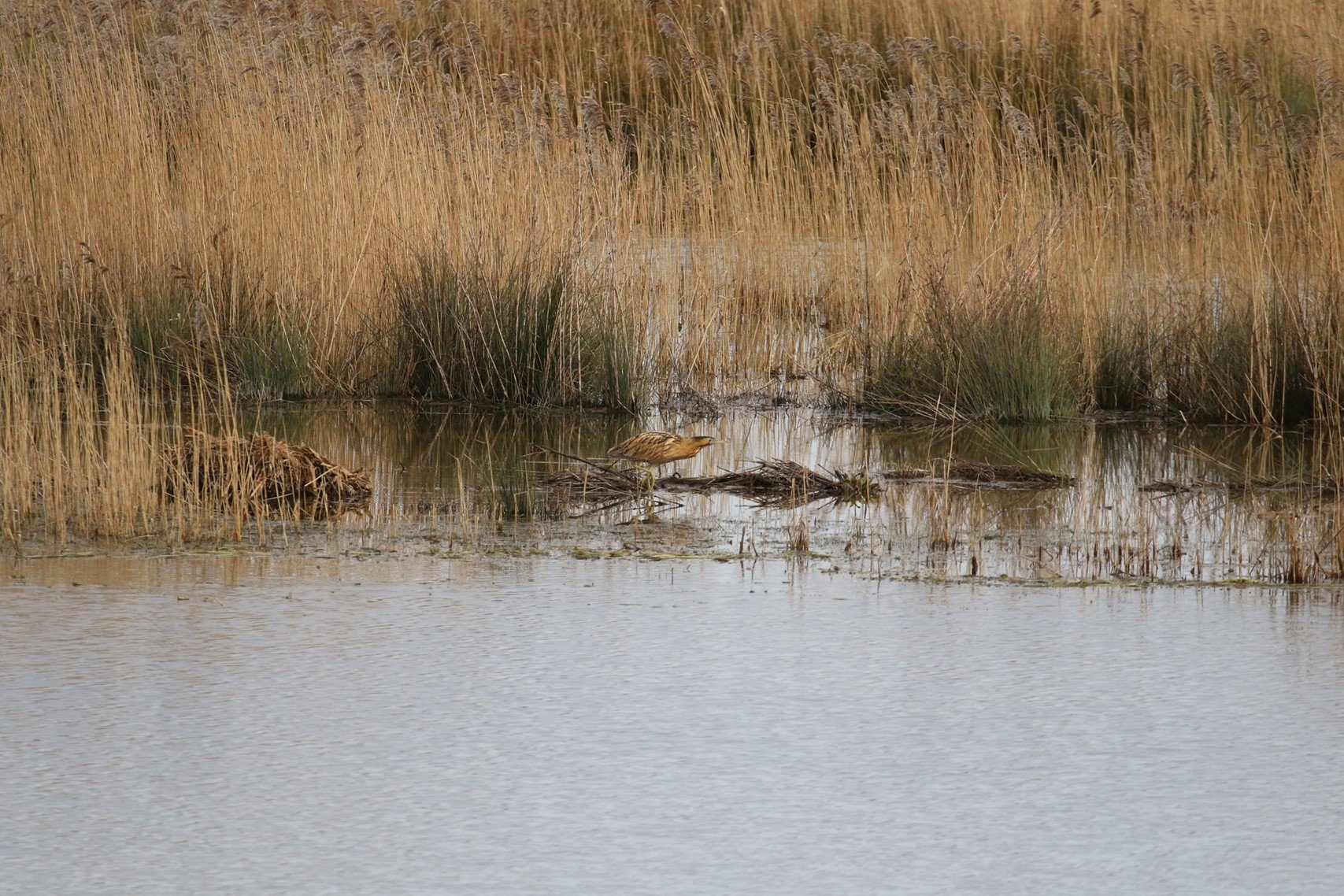January birdwatching round up
January blues? This can often be a disappointing month!
Naturalists and birdwatchers in particular often burst into the new year with enthusiasm on New Years day, tempered by aching heads, but then can experience a dreary metaphorical trudge toward February, with little of interest. This January was certainly an exception, with something of note most weeks.
January 1st started with several birders out and a combined day total of 70 species, a decent start to the year in unseasonably mild weather. The following day was rainy, but hardy souls were out and one was rewarded by a cracking male Marsh Harrier, possibly the first ever January record for the recording area. The 4th saw two Whooper Swans briefly on Langwith, before heading off North. By the 6th the weather was more appropriate for the time of year, with a temperature of -1c first thing and snow. Undeterred at least one birder was on site to watch a satellite tagged ringtail Hen Harrier hunting along the edge of Flasks and over the reedbed. Hen Harrier are surprisingly rare birds at Nosterfield, with at most 4 previous records. It was seen again on the 8th and 11th.
The 8th remained cold, but delivered the goods when a Red-Necked Grebe was found on Langwith. It stayed long enough for several of the Nosterfield regulars to get distant views amongst the Pochard, but sadly, was gone the next day.
Red Necked Grebe, Langwith
The same day saw the first sighting of Bittern for the year, in the reedbed.
Bittern, reedbed (pic 2021)
The next day, the 9th, the Bittern was seen flying the full length of Flasks before being seen again in the evening. The 9th also saw a huge flock, c1500, of Pink-footed Geese fly into Nosterfield airspace from the North, presumably disturbed from Carthorpe Mires by some of the extensive shooting that has been going on this year. On the 11th in milder weather, two Stonechats put in an appearance around the South side of Ladybridge Lake. This elusive pair were last seen in December. An expedition to the portion of the river Ure within the recording area added Dipper to the area year list on the 13th, always good to see.
Summer range of tristis - green. Winter range - blue. Map credits - Wikipedia
The 14th was a red letter day with the areas first confirmed Siberian Chiff-Chaff ‘Tristis’ found at the Nosterfield village and on Flasks Lanes. It had the decency to stay all month and pose for numerous high quality photographs. Sound recordings of its distinctive ‘peep’ call were made. I guess it thought it was in the foothills of the Himalayas, where it should be, but we knew otherwise.
The 15th saw the first sightings of Eurasian White-Fronted Goose for the year (2), with a single the next day. The 21st was cold, 1c at first light, but with bright skies. After a heads up of a big movement of Pink-Footed Geese moving West up the Humber, at around 11am onwards the skies were full of them moving in various permutations of West from the direction of the vale of York, with a total of 1348 moving through, a visible migration record for the Nosterfield recording area. The following few days remained cold and more Pink-Footed Geese went through as well as present in the area, with a peak of 206 on the reserve on the 22nd.
Pink footed geese
The 22nd also added an immature male Scaup to the years tally and the male Marsh Harrier was seen again, soaring above Keith’s Field. The exhausting pace continued with a Great White Egret SE over the polytunnels by Flasks on the 22nd. Three Eurasian White-fronted Goose posed by the side of Ladybridge on the 26th and 27th where they were seen by many. The penultimate day of the month saw the Scaup still present. Also present was the tristis Chiff-Chaff and amazingly a nominate race Chiff-Chaff (the usual sort!) was found at the sewage farm. Other notable observations during the month were regular flights of Starling over the area to and from roosts to the South, peaking at c19,000 just after dawn on the 23rd, a Curlew roost with a maximum count at dawn on the 23rds of 448 and 185 Coot on Lingham the same day.
With such a great start to the year we’re looking forward to what the months ahead will bring.
Andy Hanby, 7th February 2022






